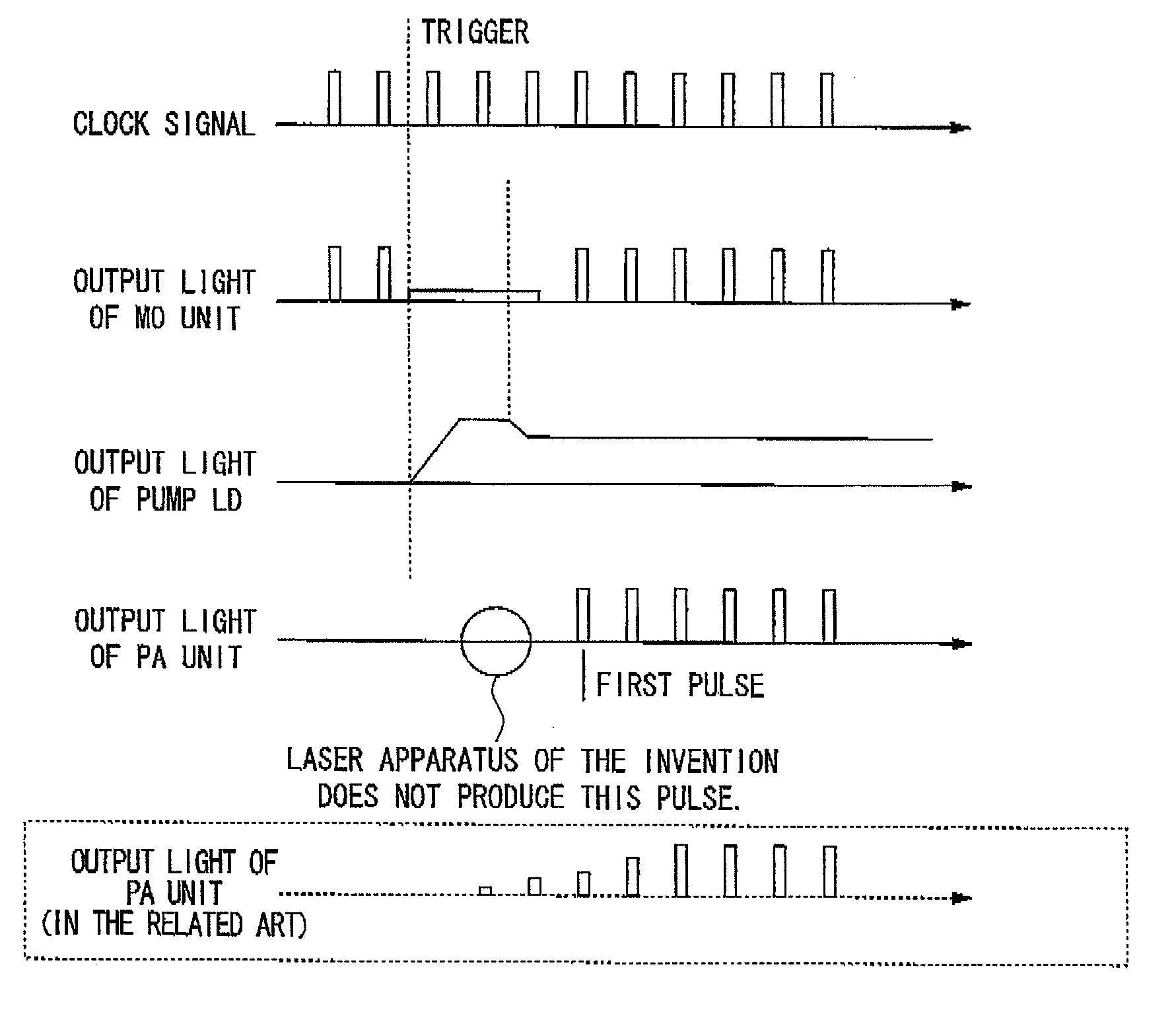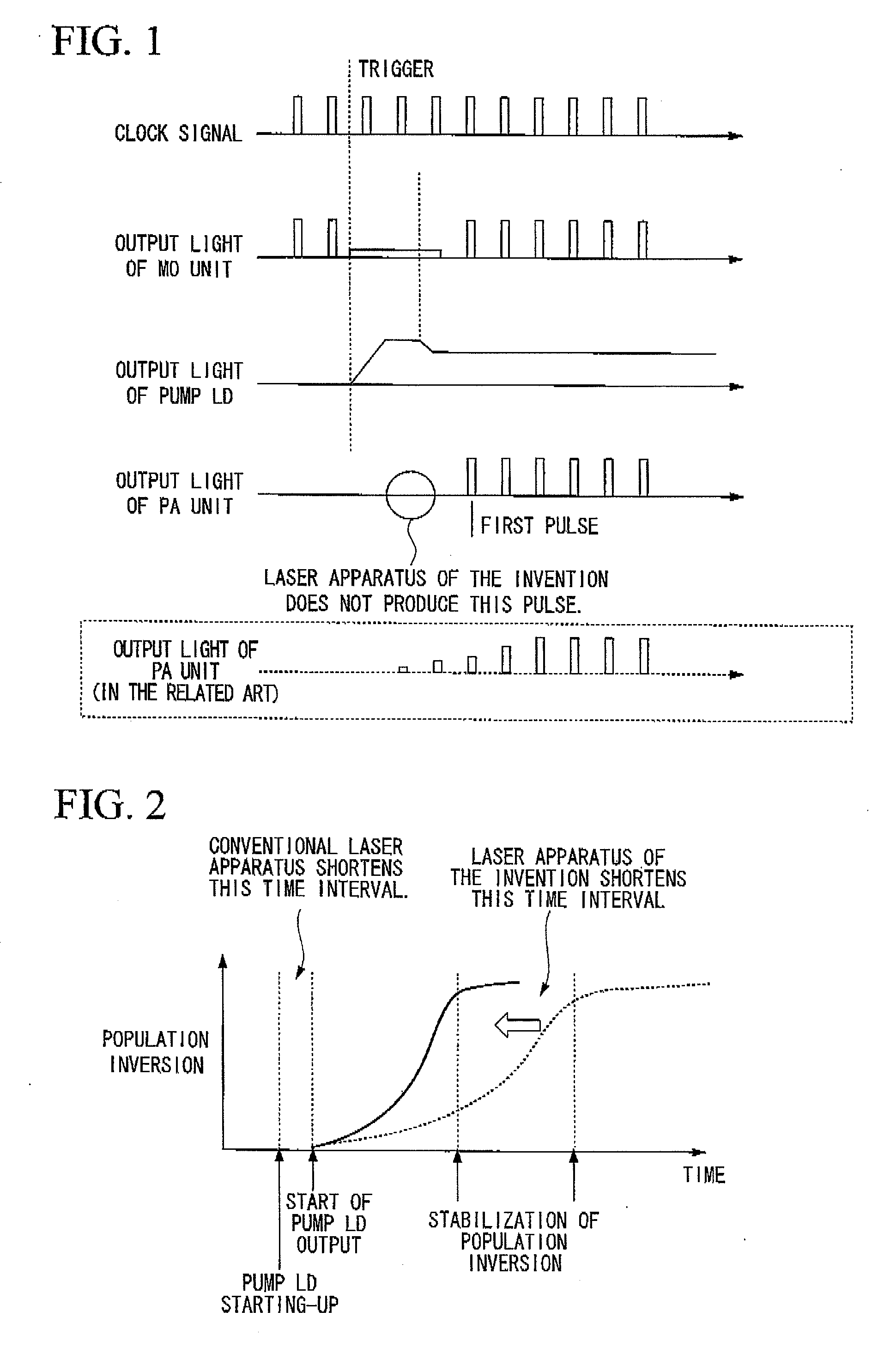Fiber pulse laser apparatus and method of control the same
a laser apparatus and fiber pulse technology, applied in the direction of electrical apparatus, wave amplification devices, laser details, etc., can solve the problems of laser oscillators that do not employ mo-pa, laser oscillators with mo-pa, and small outputs of first several pulses, etc., and achieve the effect of increasing the cost of the apparatus
- Summary
- Abstract
- Description
- Claims
- Application Information
AI Technical Summary
Benefits of technology
Problems solved by technology
Method used
Image
Examples
example 1
[0046]In a fiber laser that can obtain an average laser output of 10 W when the excitation power of a PA is 30 W and when the CW output of an MO is 0 mW (no output) with the PA excitation power of 30 W in the CW operation, the time (in the unit of μs) taken until a first pulse is equalized in magnitude with second and subsequent pulses after a plump LD outputs a power of 30 W was examined. Table 1 shows the results.
TABLE 1Time taken to output firstRepetition frequencypulse100 kHz 30 μs50 kHz70 μs30 kHz100 μs 20 kHz180 μs
[0047]In this example, when a Q switch pulse operation started after the MO maintained a CW output of 0 mW for only the time shown in Table 1, the first pulse was equalized in magnitude with the second pulse (with the margin of error of ±5%).
[0048]The result shown in Table 1 was empirically obtained based on the excitation power of the PA unit, the CW output of the MO unit, and a desired output.
example 2
[0049]Using the same fiber laser as Example 1, the same control as Example 1 was carried out to equalize the first pulse in magnitude with the second and subsequent pulses under an operation condition of an average output of 15 W. Similarly to Example 1, when the CW output of the MO is 0 mW with the PA excitation power of 30 W, the time (in the unit of μs) taken to output the first pulse was examined. Table 2 shows the results.
TABLE 2Time taken to output firstRepetition frequencypulse100 kHz 15 μs50 kHz35 μs30 kHz50 μs20 kHz90 μs
[0050]The first pulse output after elapse of the time shown in Table 2 was substantially equalized in magnitude with the second pulse.
[0051]From the comparison between Example 1 and Example 2, it can be seen that the average output in the normal operation is in proportion to the time taken to output the first pulse.
[0052]If the CW output, which was set to be 0 mW in Examples 1 and 2, was increased to 10 mW or above, the time taken to output the first pulse b...
PUM
 Login to View More
Login to View More Abstract
Description
Claims
Application Information
 Login to View More
Login to View More - R&D
- Intellectual Property
- Life Sciences
- Materials
- Tech Scout
- Unparalleled Data Quality
- Higher Quality Content
- 60% Fewer Hallucinations
Browse by: Latest US Patents, China's latest patents, Technical Efficacy Thesaurus, Application Domain, Technology Topic, Popular Technical Reports.
© 2025 PatSnap. All rights reserved.Legal|Privacy policy|Modern Slavery Act Transparency Statement|Sitemap|About US| Contact US: help@patsnap.com


